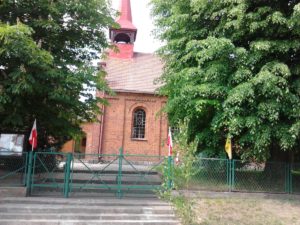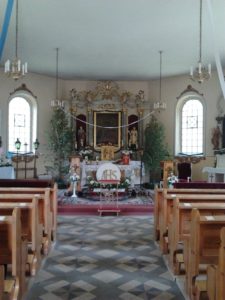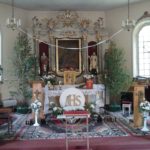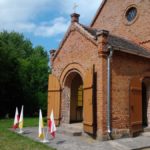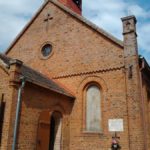Introduction
Number plates that are currently in use in Poland firstly appeared in 2000. A new form of vehicle identification has been introduced due to a reform from 1999 regarding a new administrative division of the country. The regulations entered into force on 31st March 2000. Since then each new or newly registered vehicle has plates with a black type on a white reflective background. There are also temporary, special or vintage ones with different regulation on colours and patterns, however in this article I would like to focus on those the most common. All the things visible on each number plate, including type, colours, shapes, measures etc., are strictly defined within the mentioned act of law (unfortunately I couldn’t find the full act in english thus only original polish text in is linked here).
Content
Blue area
Starting from the left side of plates we have blue field covering country code – “PL” and a flag of European Union or Polish one (second option just for those vehicle labels issued before 1st May 2006).
Place indicator
Then, on a number plate, we have either two or three capital letters that denote an administrative district of where the machine has been licensed. Two chars indicate urban, three rural one, however there are few exceptions for that rule (details later in this article). First among them always label a province of Poland. Greater Poland (wielkopolskie voivodeship) is denoted by “P” since it is a first letter of a capital and simultaneously the biggest city of the province – Poznan. People usually register their vehicles in a department that is closest to their place of residence, thus briefly we could say that first part of a number plate shows from where a driver is from, however it’s not always the truth. It is so, as one can currently live in a different district than he used to. Formally, every change in a residence address should be registered at office, but often this is only a theory. We could also have company and other let’s say third-party cars, then a particular business or a lessor (i.e. not an user) licences vehicle in a place of its headquarters. Hence you could meet for instance a lot of vehicles with place indicator denoting Warsaw (the capital city of Poland) like “WD”, “WF”, “WX”, while driver lives and works in Greater Poland.
Remaining part
After that we have a space with a hologram and then vehicle indicator that is a permutation with repetition consisted of four or five digits and/or letters. A permutation can cover any digit and almost any capital letter from a latin alphabet – all apart from B, D,I ,0 ,Z to avoid ambiguities with digits 8, 0, 1, 0, 2 respectively. I must add here that a digit 0 is also not allowed for some positions. Actually, it is worth to mention here that rules for exact number of chars (either 4 or 5), letter-allowed positions and order of releasing within number plates are strictly defined.
Place indicator along with the remaining part is a number plate string that denotes a particular vehicle.

Sample draft of a number plate denoting urban district in Greater Poland voivodeship (the proportions of content are generally maintained but the width and height of characters modified intentionally)

Sample draft of a number plate denoting rural district in Greater Poland voivodeship (the proportions of content are somehow maintained, the width and height of characters modified intentionally)
Exceptions
As mentioned above, in Greater Poland, there are exceptions when it comes to number plates place indicators. Here there are:
- PZ – two instead of three chars indicate rural area. It is so due to a large number of residents in that area, as it is around the city of Poznan. Formerly we have three letters indicator there – POZ – but we would have quickly run out of possible permutations consisted of just 4 chars in a remaining part
- PP – two chars denote both the biggest city in this (north) part of Greater Poland and the area around it. Although city of Piła ((pronounce Peeua) could have been urban district separately, since 1999 it is formally rural one along with villages and small towns nearby.
- PKO – three instead of two chars indicate urban district – a city of Konin, but strictly speaking they used to, initially. Currently, each new vehicle licensed therein has on its number plates two letters denoting the area – PN
Common mistakes
- PZ – denotes the city of Poznań – Not – only (but surely large and still growing though) area around the city.
- PP – indicates only the city of PIła – Not – also small villages and towns around the city.
- PSR – denotes town of Śrem with area around – Not – the town of Środa Wielkopolska along with area nearby
- PKO – indicates Koło town with area around – Not – it used to the city of Konin (formerly, currently it’s PN)
- PGO – denotes town of Gostyń with area around – Not – the town of Grodzisk Wielkopolski along with area around
Complete list of place indicators (in alphabetical order):
Urban districts:
PK – city of Kalisz
PKO, PN – city of Konin
PL – city of Leszno
PO, PY – city of Poznan (PY currently only very small group for instance motorbikes but other vehicles in future would have it as well)
Rural districts:
PCH – Chodzież (pronounce Hodjesh) town alongside small towns and villages around
PCT – towns of Czarnków (pronounce Charnkoov) and Trzcianka (pronounce Tshcianka) along with area around
PGN – Gniezno town and area around
PGS – town of Gostyń alongside small towns and villages around
PGO – Grodzisk Wielkopolski town along with area around
PJA – town of Jarocin and area around
PKA – area around the city of Kalisz
PKE – Kępno town along with small towns and villages around
PKL – town of Koło and area nearby
PKN – area around the city of Konin
PKS – Kościan town and area around
PKR – town of Krotoszyn alongside area around
PLE – area around the city of Leszno
PMI – Międzychód town and area around
PNT – town of Nowy Tomyśl along with area around
POB – Oborniki Wielkopolskie town alongside area around
POS – Ostrów Wielkopolski town and area neaarby
POT – town of Ostrzeszów alongside small towns and villages around
POZ, PZ – area around the city of Poznan
PP – city of Piła (pronounce Peeua) along with area around
PPL – Pleszew town and area around
PRA – town of Rawicz alongside area around
PSL – Słupca town and small towns and villages around
PSZ – town of Szamotuły and area around
PSR – Środa Wielkopolska town and area around
PSE – Śrem town along with area around
PTU – town of Turek and area around
PWA – Wągrowiec town along with small towns and villages around
PWL – town of Wolsztyn (pronounce Volshtyn) and area around
PWR – Września town alongside area around
PZL – town of Złotów (pronounce Zwotoov) with area around

